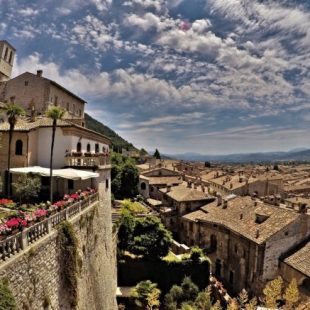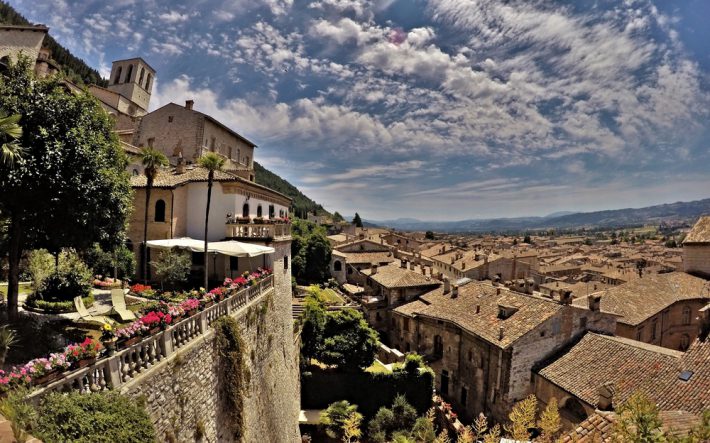
Three Charming Italian towns in Umbria
Umbria is full of traditional towns and villages, many of them unspoilt with little having changed since their humble beginnings. When touring around it is easy to follow the guide books and only go to the popular places, thereby missing out on some real gems. It is the only Italian region with no access either to the sea or international borders. For this reason, Umbria has remained truly authentic in its way of receiving visitors, with natural kindness and generosity.

The Borghi Piu belli dell’Italia supports and preserves many of these traditional villages. Although protection and restoration are their main aims, they also want people to come and see these sites, in order to raise revenue for those communities.
Take a look at three incredibly charming Umbrian towns:
Gubbio
The town of Gubbio, spread across the slopes of Monte Ingino, perhaps more than any other, has preserved its cultural and historical past. The very buildings have a presence that defines the harsh conditions of the Middle Ages, but they stand proud and strong, stopping time from damaging their weather beaten stone. Gubbio is renowned for its colourful ceramics, which shine out from many stonewalls. Look for the ‘Tavole eugubine’; these are seven bronze tablets that are inscribed in an ancient linguistic form of Umbrian dating back to the 2nd and 3rd centuries.
Todi
This traditional medieval town is situated on a beautiful hilltop and retains no less than three different sets of outer walls from the Etruscan and Roman eras. Its main piazza is surrounded with palaces and buildings displaying Gothic and renaissance character. It is also the home of the Palaxxo Del Popolo which dates back to 1213 and is one of Italy’s oldest communal buildings.
Spoleto
Spoleto is a wonderful little town on a hill topped by the Rocca Albornoziana. It has plenty of small winding streets, medieval and historical buildings and even palaces. It is easy to see how buildings arose not only as dwellings, but as communal protection, surrounded by high stone walls during times of conflict.
Nearby is Monteluco, once the site for an ancient cult. If you have the time, the winding road to it is well worth a trip. Each year Spoleto hosts an international arts festival aptly named ‘Festival of the Two Worlds’, a comment on the meeting of the old world and the new.


